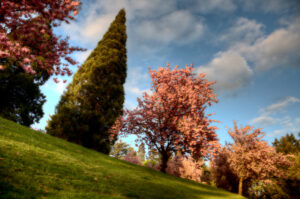Mayan Ruins Of Ixchel Videos:
Discover the Mayan Ruins of Ixchel. Below is a collection of videos so you can see it before you go. Looking for an amazing sunrise? Some say you can find it here in Punta Sur.
Ixchel Ruin, Isla Mujeres: Tracing the Footsteps of the Mayan Goddess
Nestled off the Yucatán Peninsula’s coast, the enchanting island of Isla Mujeres offers far more than stunning beaches and azure waters. It is also home to a fascinating archaeological site, the Ixchel Ruin, bearing testament to the island’s rich Mayan heritage. Named after the Mayan goddess of childbirth and medicine, Ixchel, this site provides a window into the island’s intriguing past and its intimate relationship with the divine feminine.
Location and History
Perched on the southernmost tip of Isla Mujeres, the Ixchel Ruin is located at Punta Sur, the highest elevation on the Yucatán Peninsula. This cliff-top temple overlooks the Caribbean Sea, offering breathtaking panoramic views and an exquisite sunrise that draws both locals and tourists alike.
Isla Mujeres, meaning ‘Island of Women,’ reportedly received its name from the Spanish conquerors in the 16th century, inspired by the numerous clay statues of the goddess Ixchel and her court found at the site. The island served as a sanctuary dedicated to the worship of Ixchel, attracting Mayan women from far and wide who would make pilgrimage journeys to seek the goddess’s blessings for fertility and safe childbirth.
The Ruin and the Goddess
Despite its ravages by time and weather, the Ixchel Ruin retains a distinct allure. The main temple structure, though modest in size, is rich in symbolism. It’s important to remember that what remains today is only a fraction of the original shrine, yet it still manages to capture the profound spiritual significance it once held.
Ixchel, often depicted as an elderly woman holding a snake in her hands, was a goddess of many associations including the moon, water, childbirth, and weaving. She was greatly revered in the Mayan culture, seen as a benevolent deity who bestowed life and nourishment. The temple in her honor on Isla Mujeres underscores the importance of these elements of life and femininity in Mayan society.
The Park and Nearby Attractions
The Ixchel Ruin is now part of a larger ecological park, the Acantilado del Amanecer (Cliff of the Dawn), so named as this is the first place in Mexico to be kissed by the morning sun. Visitors can walk along the designated pathways surrounding the ruin, taking in the stunning scenery and observing a variety of local flora and fauna.
Additionally, Punta Sur features a modern sculpture park, integrating works from contemporary Mexican artists that play with the themes of mythology, history, and the natural environment. Each sculpture, while modern in appearance, hints at the area’s ancient cultural roots.
Also worth a visit is the nearby Tortugranja, a turtle farm dedicated to the conservation and rehabilitation of sea turtles, a venture in line with the island’s spirit of respect and reverence towards nature.
Practical Tips for Visitors
The Ixchel Ruin and Punta Sur are open to visitors daily. As it is an outdoor site with limited shade, it’s advisable to visit early in the day to avoid the heat, which also offers a chance to witness the mesmerizing sunrise. Entry fees are nominal and used towards site maintenance.
When visiting, it’s important to remember that this is an archaeological site of cultural importance. Therefore, visitors should respect the boundaries and refrain from climbing on the ruins.
Conclusion
The Ixchel Ruin on Isla Mujeres offers a rich, tranquil, and contemplative experience for those interested in delving into Mayan history and culture. Even though the ruin itself is small, the heritage it represents is grand, intertwined with the natural beauty and the spirituality of the island. The blend of archaeological remnants, natural wonders, and artistic expressions in the surrounding area creates an immersive cultural experience. In this regard, Ixchel Ruin stands as a testament to the enduring resonance of the past, inviting us to pause and appreciate the rhythms of nature, history, and human creativity.




